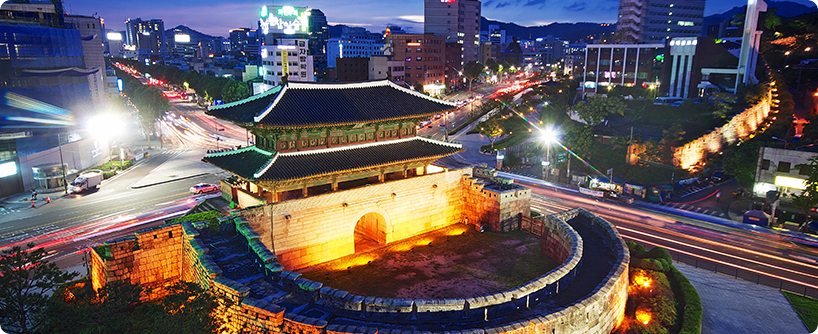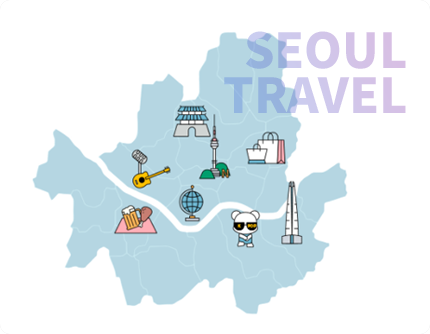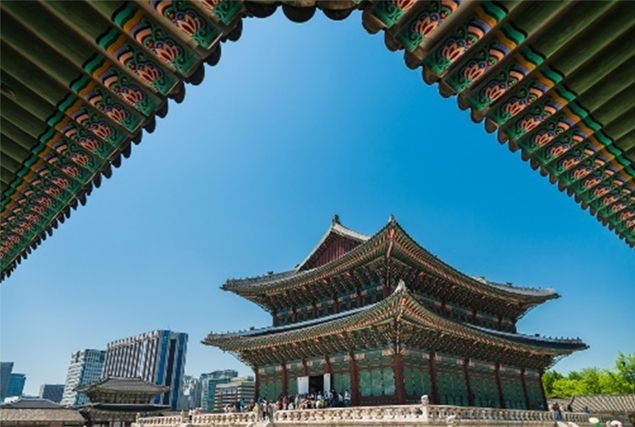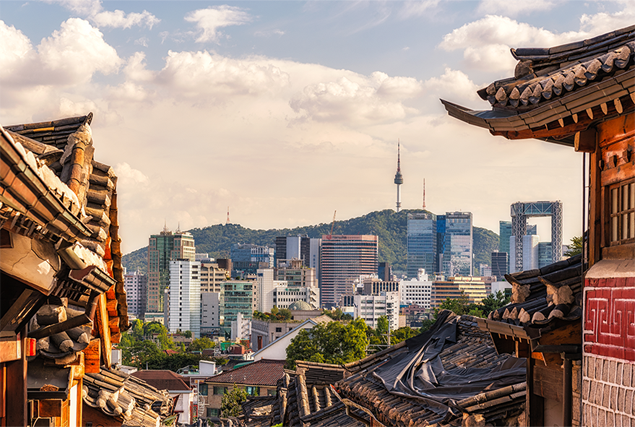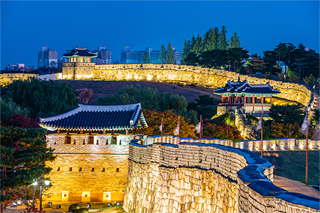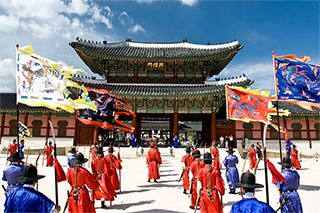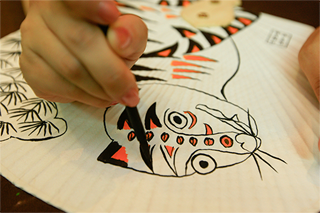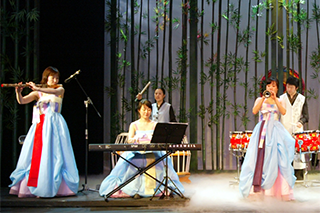About Seoul, Korea
About Korea
About Seoul
The Republic of Korea (herein after Korea) is a country visited by approximately ten million international travelers every year. With its long history in culture and tradition, the country has a lot to offer to travelers. Continue reading to learn general information about Korea before visiting.

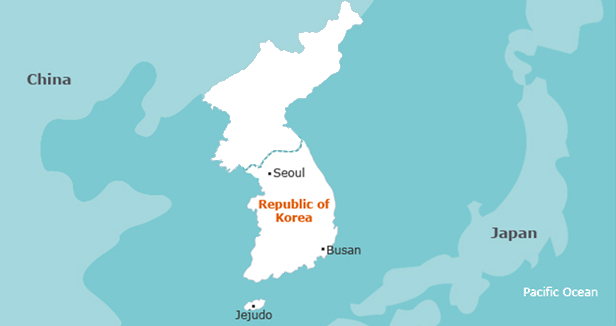
The Korean peninsula, roughly 1,030 kilometers long and 175 kilometers wide at its narrowest point, is located in Northeast Asia. With Seoul as its capital city, Korea's total land area is 100,363 kilometers squared. Korea's neighbors include Japan to the east, China to the west, and Democratic People's Republic of Korea (North Korea) across the northern border.
Quick Facts
| Country Name | Republic of Korea (South Korea) |
|---|---|
| Capital City | Seoul (population: 9.66 million as of 2020) |
| Size | 1,012km from north to south and 165km from east to west |
| National Flag | Taegeukgi |
| Language | Korean (writing system: Hangeul) |
| Country Dialing Code | +82 |
| National Flower | Mugunghwa |
| Population | 51,780,579 (August, 2020) |
| Time Zone | GMT +9 (Korean Standard Time KST) |
National Flag
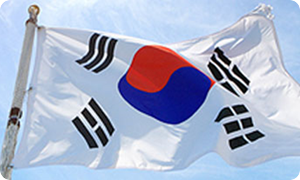 Taegeukgi: Its design symbolizes the principles of the yin and yang in oriental philosophy. The circle in the center is divided into two equal parts, where the upper red responds to the active cosmic forces of the yang; conversely, the lower blue section represents the passive cosmic forces of the yin. The flag's background is white, representing Korean’s desire for peace and purity. The circle is surrounded by four trigrams, one in each corner, characterizing continual movement, balance and harmony. Each trigram symbolizes one of the four universal elements (heaven, earth, fire, and water).
Taegeukgi: Its design symbolizes the principles of the yin and yang in oriental philosophy. The circle in the center is divided into two equal parts, where the upper red responds to the active cosmic forces of the yang; conversely, the lower blue section represents the passive cosmic forces of the yin. The flag's background is white, representing Korean’s desire for peace and purity. The circle is surrounded by four trigrams, one in each corner, characterizing continual movement, balance and harmony. Each trigram symbolizes one of the four universal elements (heaven, earth, fire, and water).
National Flower
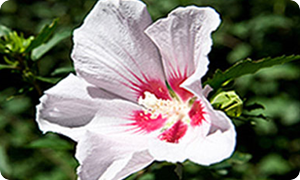 Mugunghwa: The national flower of Korea is mugunghwa, or rose of Sharon, which comes into bloom from July to October every year. Profusions of the blossom gracefully decorate the entire nation during that time, providing a view which has been loved by all Korean for many years. It is also favorite plant of the people as the flower’s symbolic significance stems from the Korean word ‘mugung’, meaning immortality. This word accurately reflects the enduring nature of Korean culture, and the determination and perseverance of the Korean people.
Mugunghwa: The national flower of Korea is mugunghwa, or rose of Sharon, which comes into bloom from July to October every year. Profusions of the blossom gracefully decorate the entire nation during that time, providing a view which has been loved by all Korean for many years. It is also favorite plant of the people as the flower’s symbolic significance stems from the Korean word ‘mugung’, meaning immortality. This word accurately reflects the enduring nature of Korean culture, and the determination and perseverance of the Korean people.
National Anthem
 Aegukga: Aegukga literally means 'a song expressing one’s love towards their country' in Korean, and that was the exact reason this anthem came to be born. Since its creation, the song has undergone several versions of transition; however, it remained focused on praising the sense of loyalty to the country. Maestro Ahn Eak-tai (1905-1965) is credited with having made the present form of the song in 1935, which was then adopted by the Korean Government (1948) officially as the national anthem and began to be used at all schools and official functions.
Aegukga: Aegukga literally means 'a song expressing one’s love towards their country' in Korean, and that was the exact reason this anthem came to be born. Since its creation, the song has undergone several versions of transition; however, it remained focused on praising the sense of loyalty to the country. Maestro Ahn Eak-tai (1905-1965) is credited with having made the present form of the song in 1935, which was then adopted by the Korean Government (1948) officially as the national anthem and began to be used at all schools and official functions.
Population of Korea
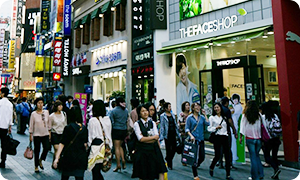 The total population of Korea is approximately 51,780,579 (as of August 2020), with most of the population residing in the Seoul metropolitan area. Outside of Seoul, other large and economically advanced cities such as Busan, Incheon, Daegu, Daejeon, Gwangju and Ulsan also have higher population densities than other cities in Korea.
Information courtesy of Ministry of the Interior and Safety (MOIS): www.mois.go.kr (Korean, English)
The total population of Korea is approximately 51,780,579 (as of August 2020), with most of the population residing in the Seoul metropolitan area. Outside of Seoul, other large and economically advanced cities such as Busan, Incheon, Daegu, Daejeon, Gwangju and Ulsan also have higher population densities than other cities in Korea.
Information courtesy of Ministry of the Interior and Safety (MOIS): www.mois.go.kr (Korean, English)
